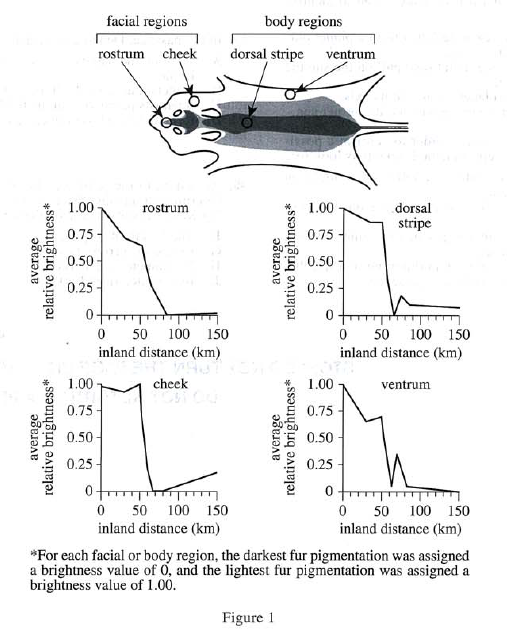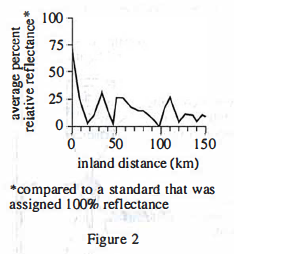Questions 1-6 are based on the following passage.
In a study of fur pigmentation in deer mice, Peromyscus polionotus, scientists compared the brightness of the fur of mice from populations located different distances directly inland from a coastal site. Figure 1 shows
the 2 facial regions and the 2 body regions at which the fur of each mouse was evaluated (on a scale from 0 to 1.00) with respect to its brightness. Figure 1 also shows how, for each of the 4 regions, average relative brightness varied with inland distance. 
*For each facial or body region, the darkest fur pigmentation was assigned a brightness value of 0, and the lightest fur pigmentation was assigned a brightness value of 1.00.
Figure 2 shows how the average brightness of surface soil samples, given as the average percent relative reflectance, varied with inland distance. 
Figures 1 and 2 adapted from Lynne M. Mullen and Hopi E. Hoekstra. "Natural Selection Along an Environmental Gradient: A Classic Cline in Mouse Pigmentation." ©2008 by The Author(s).